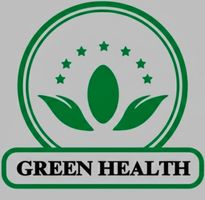Welcome to Our Green World supplements online store. We deliver international too via DHL International couriers
Contact us now for all your enquiries
Acne and pimples

Eczema
Eczema or dermatitis is a group of conditions that are characterized by inflammation of the skin. People with eczema will have rashes, redness, scaling and occasionally small blisters. The patches may appear on the face, scalp, neck, back, inside of the elbows, behind the knees, on the buts, hands and feet. Some factors can trigger the flare-ups of the eczema, such as soap, detergents, rough fabric, or certain foods. A dry atmosphere and change of temperature, dental eruptions and stress can all trigger this. Overtime the skin can be thickened, bumpy and constantly itchy even when the inflammation is not flaring up. Eczema usually start at early childhood and may last into adult life. Eczema is an allergic disease. The causes are unknown, but it involves genetic and environmental factors. It often runs in families whose members also tend to develop heyfevers, asthma and certain food allergy. Most notable is the gene that encodes for filaggrin, a protein involved in water retention and is responsible for skin barrier function. Mutation of the filaggrin gene results in dry skin and has a strong susceptibility of eczema. Eczema is not contagious and there is no cure of it.
Listed below are the most common nutritional deficiencies associated with eczema, recommended daily intake of these nutrients and good foods sources to increase your intake through diet.
Among the must-have foods for healthy skin: omega-3 fatty acids -- the "good fats" that have recently been credited with increasing heart health as well as helping your skin look healthier. The foods highest in omega-3 fatty acids include seafood (especially tuna and salmon) as well as walnuts, canola oil, and flax seed.
Pine pollen’s nutritional profile makes it an extremely beautifying superfood that can greatly improve the condition of the skin, hair, and nails. It naturally encourages the body to produce more collagen and elastin which can help to reduce wrinkles, tighten the skin, and reduce the appearance of wrinkles.
Vitamin A helps epithelial cells, the skin’s outer most layer of tissue, to replicate as intended. It helps to heal excoriated skin and decreases the risk of secondary bacterial infections.
Eczema sufferers have low levels of an enzyme called glutathione peroxidase, which depends on selenium for reactions to take place.
A survey of Chinese children found that lower blood levels of zinc were associated with greater risk of eczema as was a higher ration of zinc:copper.
Avoidance of over-bathing
Applying moisturizer frequently, especially after bathing
Bathing in warm, not hot, water and using a mild soap
Limiting or avoiding contact with known irritants like soaps, perfumes, detergents, jewelry, environmental irritants, etc.
Wearing loose-fitting clothing (cotton clothing may be less irritating for many people than wool or synthetic fibers)
The use of cool compresses to help control itching
Avoiding foods that cause allergic reactions.
Our skin is the window to our body that reveals the stories of our life. From acne breakouts during your teenage years to the wrinkles of aging, your life styles are reflected in your skin. With a healthy lifestyle and stress management, sun protection, in combine with Green World Skin Care produc
Welcome to Our Green World supplements online store. We deliver international too via DHL International couriers
Contact us now for all your enquiries
